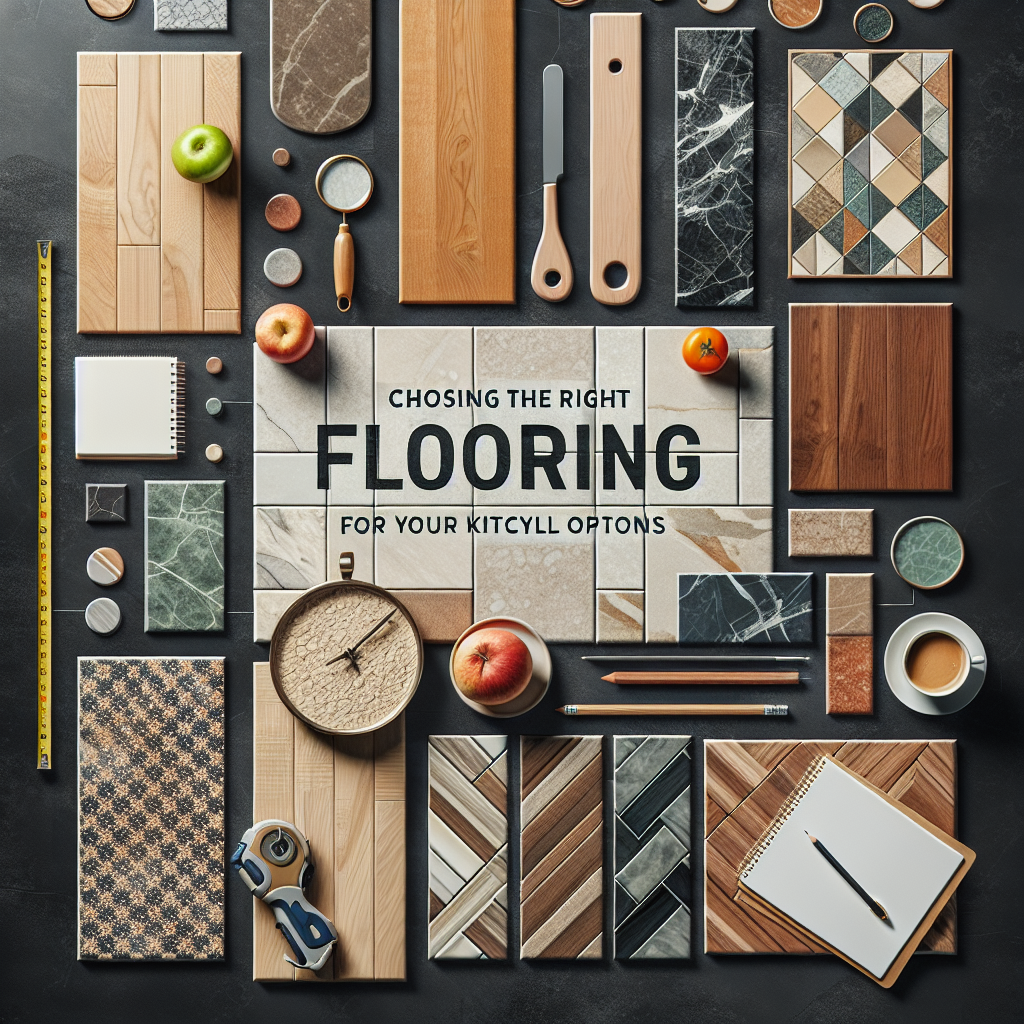Your kitchen is the heart of your home — a space for cooking, gathering, and creating lasting memories. With so much foot traffic, messages from little hands, and the odd spill, the right flooring is crucial. It needs to withstand the wear and tear of daily life while also reflecting your personal style. In this article, we’ll explore various flooring options to help you strike the perfect balance between durability and aesthetics.
The Importance of Flooring in Your Kitchen
Before diving into specific materials, let’s consider why your choice of kitchen flooring matters. The right flooring can significantly impact your kitchen’s overall functionality, safety, and atmosphere. With heated discussions over which is the best family meal or the inevitable moments of laughter over spilled juice, flooring plays a silent but essential role in your home.
What to Consider When Choosing Flooring
- Durability: Your kitchen flooring needs to be tough enough to handle moisture, spills, and heavy foot traffic.
- Maintenance: Some materials require more upkeep than others. Choose flooring that fits your lifestyle.
- Style: From rustic farmhouse to sleek modern designs, your flooring should complement your kitchen decor.
- Comfort: If you spend long hours cooking, consider how comfortable the surface feels underfoot.
Stylish and Durable Flooring Options
1. Luxury Vinyl Flooring
Luxury vinyl flooring (LVF) has gained significant popularity in modern kitchens. This option combines aesthetics with exceptional durability.
Benefits:
- Waterproof: Ideal for kitchens where spills are common.
- Variety of Designs: Available in a spectrum of colors and textures, LVF can mimic wood, stone, and even ceramic.
- Comfortable: Softer underfoot compared to tile or stone, making prolonged standing more manageable.
Downside: Although it is durable, LVF can be susceptible to scratching if heavy furniture is moved without care.
2. Porcelain Tile
Porcelain tiles are often seen as one of the most durable flooring options available.
Benefits:
- Water-Resistant: Porcelain is non-porous, making it perfect for dealing with spills.
- Versatile Design: Available in various designs, from classic to contemporary.
- Easy to Clean: A quick sweep and mop are all you need to maintain hygiene.
Downside: While it’s incredibly durable, porcelain can be cold and hard, which might not be the most comfortable option for long cooking sessions.
3. Hardwood Flooring
Nothing beats the timeless appeal of hardwood flooring, adding elegance and warmth to your kitchen.
Benefits:
- Aesthetic Appeal: Offers a classic and inviting look that enhances your kitchen ambiance.
- Resilient: When properly sealed, hardwood can handle moisture and spills.
- Refinishing Options: Scratches and wear can be minimized with refinishing, allowing for long-lasting beauty.
Downside: Not as waterproof as other options, and maintenance can be higher.
4. Bamboo Flooring
For the eco-conscious homeowner, bamboo flooring is an excellent choice, offering a unique look with robust qualities.
Benefits:
- Sustainable: Harvested from rapidly renewable grass, it’s an environmentally friendly option.
- Durable and Hard: Bamboo is harder than many traditional hardwoods, making it a tough competitor for kitchens.
Downside: It can be susceptible to moisture damage if not sealed correctly, so ensure you select a high-quality product.
5. Cork Flooring
Cork is another sustainable option that’s gaining traction in kitchen design.
Benefits:
- Comfortable and Soft: Feet will feel cushioned while standing for long periods.
- Natural Insulator: Keeps your kitchen warmer, which can be particularly advantageous in cooler climates.
- Antimicrobial: The natural properties of cork resist mold and mildew.
Downside: It can be sensitive to moisture, so proper sealing is essential.
Tips for Maintaining Your Kitchen Flooring
Regardless of your choice, maintaining your kitchen flooring is vital for longevity and looks. Here are some quick tips:
- Regular Cleaning: Sweep or vacuum daily and mop weekly to prevent dirt buildup.
- Immediate Spill Cleanup: Address spills promptly to avoid stains or water damage.
- Use Doormats: Consider placing mats at entry points to minimize dirt brought in from outside.
- Follow Manufacturer Care Instructions: Each flooring type has specific care needs — don’t overlook them.
Conclusion
Choosing the right flooring for your kitchen is essential for creating a space that is not only functional but also welcoming and stylish. Whether you opt for luxury vinyl, porcelain tile, hardwood, bamboo, or cork, you’ll find options that cater to your aesthetic tastes and practical needs.
Don’t rush the decision; take your time to make an informed choice that aligns with your lifestyle and enhances your home. After all, every time you step into your kitchen, you’ll appreciate the thoughtfulness that went into choosing the perfect flooring for your family’s favorite gathering space.


